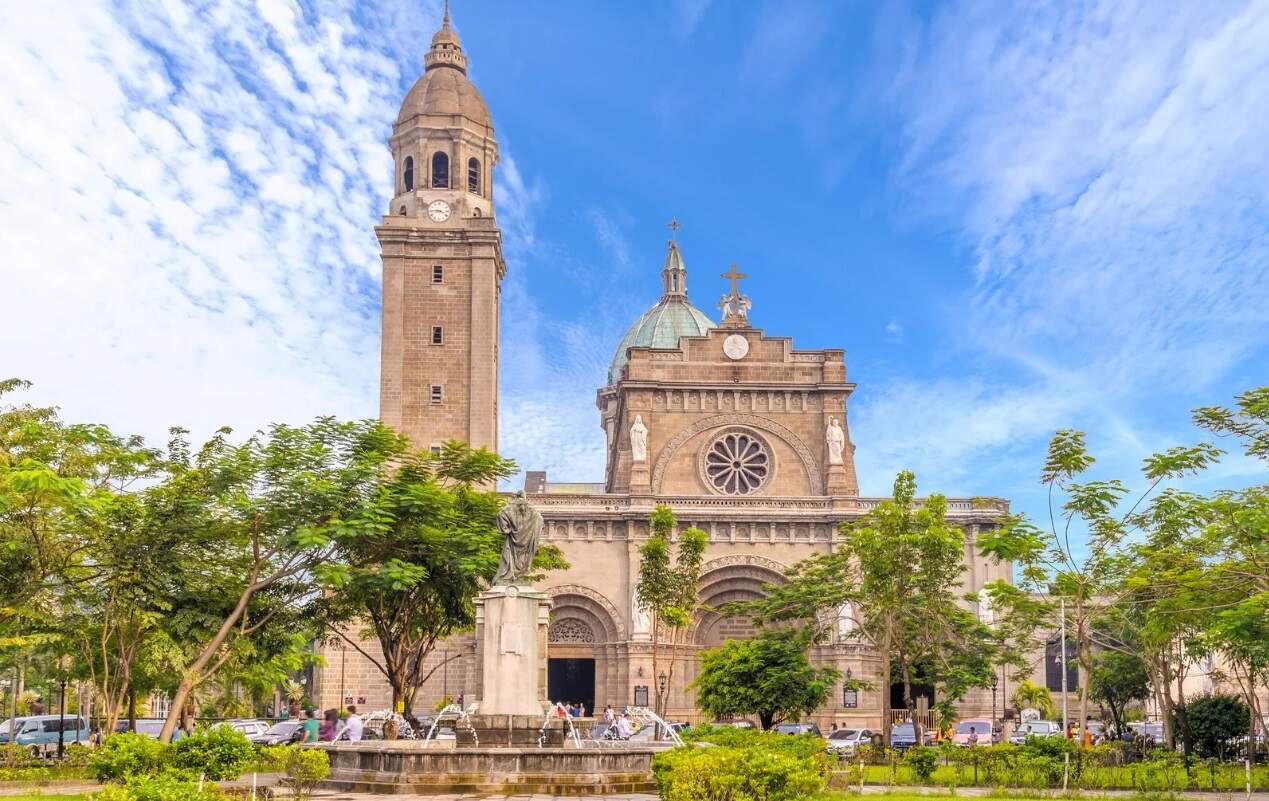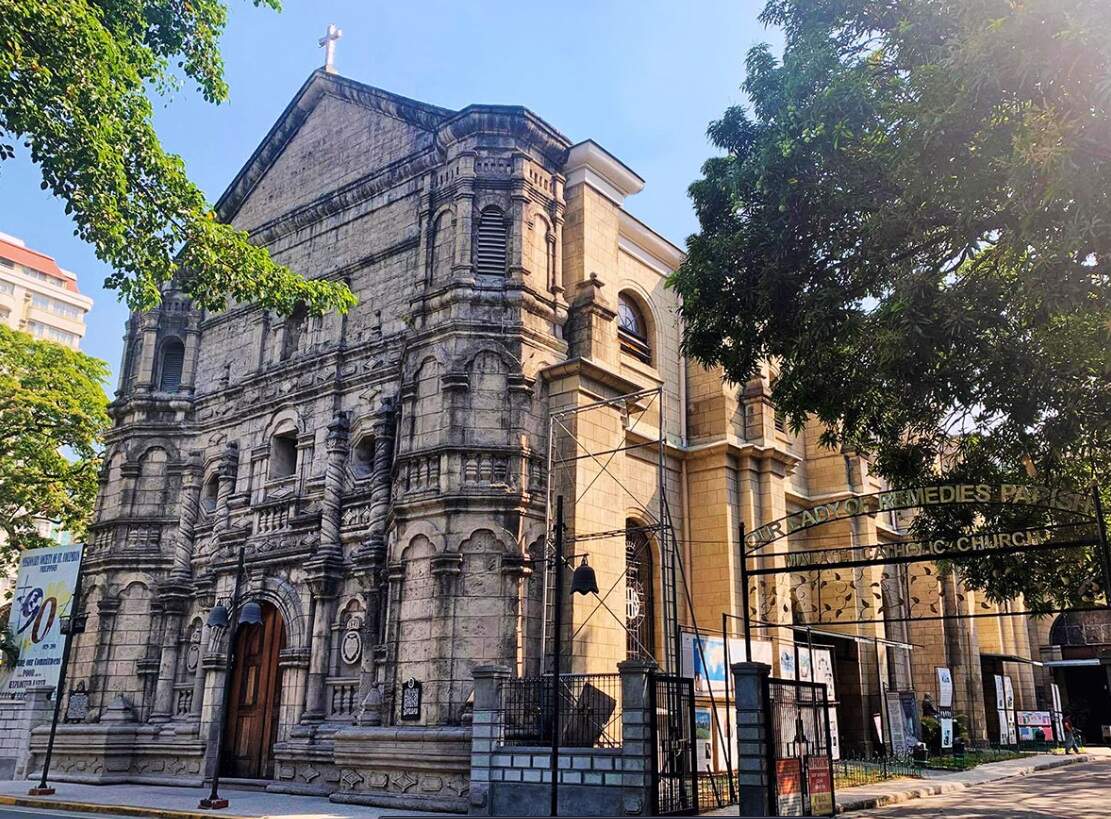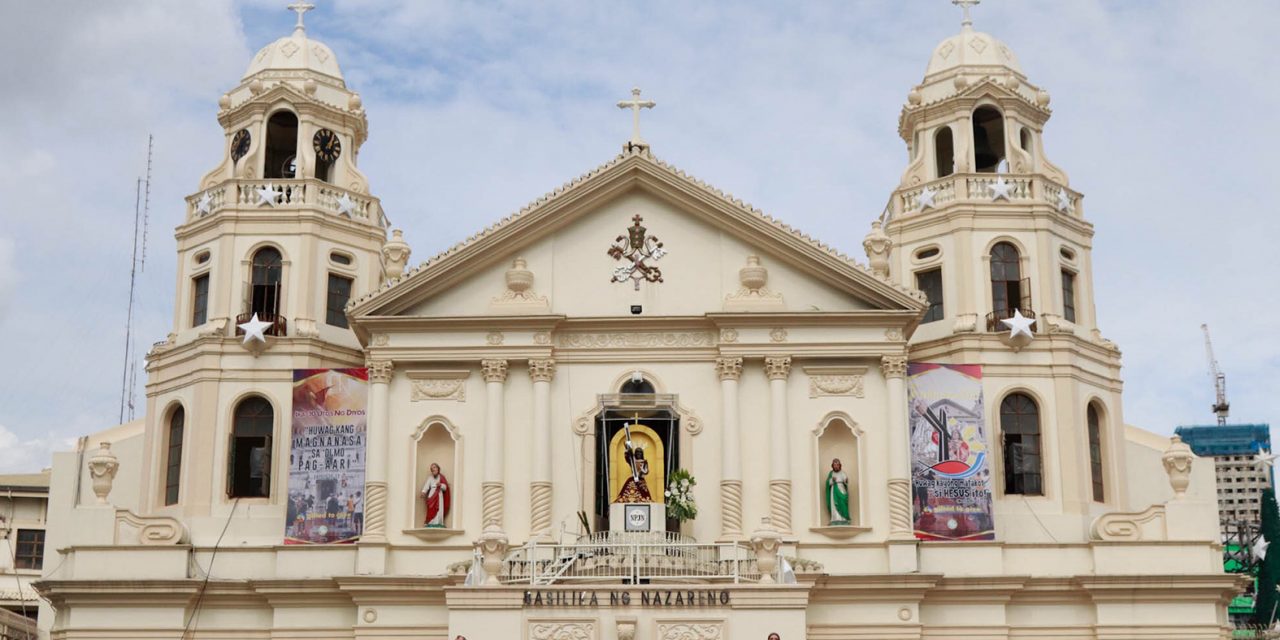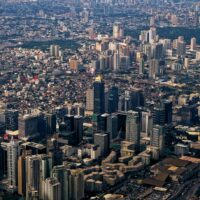
Churches are deeply woven into the fabric of Philippine culture, serving not only as places of worship but also as significant cultural landmarks. The influence of Christianity, particularly Roman Catholicism, is a cornerstone of Filipino identity, shaping the nation’s history, traditions from Lent to Christmas, and values that govern some of their daily lives. In the bustling metropolis of Manila, churches are more than just religious sanctuaries; they stand as monumental testimonies to the country’s rich heritage and resilience. Whether you’re a devout pilgrim or a curious traveler, exploring these churches offers a profound glimpse into the soul of the Philippines.
Related articles: Cutud Lenten Rites, 10 Beloved Filipino Christmas Traditions
1. Manila Cathedral: The Heart of Intramuros

The Manila Cathedral, located in the historic walled city of Intramuros – one of the must-see places when visiting Manila, is perhaps the most iconic church in the Philippines. Officially known as the Minor Basilica of the Immaculate Conception, this grand edifice has witnessed the ebb and flow of Manila’s history, having been rebuilt multiple times due to natural disasters and wars. The current structure, completed in 1958, is a stunning example of Romanesque Revival architecture, featuring a majestic façade, intricate stained glass windows, and a towering bell tower.
As the seat of the Archdiocese of Manila, the cathedral holds a special place in the hearts of many Filipinos. Beyond its religious significance, the Manila Cathedral is an enduring symbol of the Filipino spirit—its resilience in the face of adversity and its unwavering faith. For anyone seeking to understand Filipino culture, a visit to the Manila Cathedral is essential, offering a tangible connection to the country’s storied past and its enduring traditions.
2. San Sebastian Church: A Gothic Marvel
Another must-visit church in Manila is the San Sebastian Church, a true architectural marvel and the only all-steel church in Asia. Located in the district of Quiapo, this basilica is renowned for its neo-Gothic design, characterized by pointed arches, ribbed vaults, and flying buttresses. The church was prefabricated in Belgium, shipped to the Philippines, and assembled piece by piece in 1891.
San Sebastian’s unique construction not only makes it a standout in the Philippine landscape but also a testament to the country’s rich cultural exchanges with Europe during the colonial period. The church’s interior is equally impressive, with its stained glass windows casting a kaleidoscope of colors on the intricately designed altars and statues. For those interested in architecture and history, San Sebastian Church offers a fascinating insight into the fusion of Filipino and European influences.
3. Malate Church: A Seaside Sanctuary

Overlooking Manila Bay, Malate Church is one of the oldest churches in Manila, with its origins dating back to the 16th century. Dedicated to Our Lady of Remedies, the patroness of childbirth, the church has long been a place of refuge and hope for the faithful. The church’s Baroque façade, with its curved lines and ornate carvings, reflects the architectural style brought by Spanish colonizers, while its interior exudes a sense of serenity and devotion.
Malate Church’s location near the bay adds to its charm, offering visitors a peaceful respite from the bustling city. Its cultural significance is also profound, as it has stood the test of time, surviving numerous earthquakes, typhoons, and wars. A visit to Malate Church provides not just a spiritual experience but also a historical journey through the evolution of Filipino religious life.
4. Binondo Church: A Symbol of Chinese-Filipino Heritage
The Binondo Church, also known as the Minor Basilica of St. Lorenzo Ruiz, stands as a symbol of the rich Chinese-Filipino heritage in Manila. Located in the heart of Chinatown, this church was originally founded in 1596 to serve Chinese converts to Christianity. The church’s architecture is a blend of Baroque and Chinese influences, reflecting the unique cultural fusion that defines the Binondo district.
Inside, the church houses a shrine dedicated to St. Lorenzo Ruiz, the first Filipino saint, who was of Chinese-Filipino descent. Binondo Church is not just a place of worship but a living testament to the multiculturalism that has shaped Manila over the centuries. For those interested in exploring the diverse influences that make up Filipino culture, a visit to Binondo Church is a must.
Related article: A Travel Guide to Binondo- The World’s Oldest Chinatown
5. Quiapo Church: The Home of the Black Nazarene

Quiapo Church, officially known as the Minor Basilica of the Black Nazarene, is perhaps the most famous church in Manila due to its iconic statue of the Black Nazarene, a dark-skinned image of Christ carrying the cross. Devotees believe the statue to be miraculous, and every year, millions of Filipinos participate in the Traslación, a grand procession to commemorate the transfer of the statue to Quiapo Church.
The church itself, with its Baroque architecture and bustling plaza, is a vibrant hub of faith and tradition. Quiapo Church embodies the deep-seated devotion of Filipinos, making it an essential stop for anyone wanting to experience the fervor of Filipino spirituality firsthand.
Modern Churches Worth Visiting
While Manila is home to many historic churches, there are also modern ones that deserve attention. The Church of the Holy Sacrifice in UP Diliman is a prime example, designed by four National Artists: Leandro Locsin for architecture, Arturo Luz for visual arts, Vicente Manansala for painting, and Napoleon Abueva for sculpture. This circular church, with its open-air design and stunning murals, is a masterpiece of Filipino modernist architecture.
Another noteworthy modern church is the San Pedro Calungsod Chapel in SM Aura, BGC. This unique mall chapel, designed by the renowned architect Carlos Arnaiz, is a minimalist structure that offers a serene space for prayer amidst the urban bustle. Its modern design and location within a commercial complex make it a fascinating example of how contemporary Filipino culture continues to evolve.
Related article: Top 5 Biggest Shopping Malls Around Metro Manila
Conclusion
Churches are integral to Philippine culture, offering a unique perspective on the nation’s history, art, and spirituality. Exploring these sacred spaces allows visitors to connect with the deep-rooted traditions that have shaped Filipino identity over the centuries.
Whether you’re drawn to the historic grandeur of the Manila Cathedral or the modern elegance of the San Pedro Calungsod Chapel, visiting these churches in Metro Manila provides a profound insight into the unique culture and history of the Philippines. Take the time to explore these hallowed halls, and you’ll discover a world where faith, history, and culture converge in remarkable harmony.
Related article: Churches in the Philippines for Visita Iglesia





